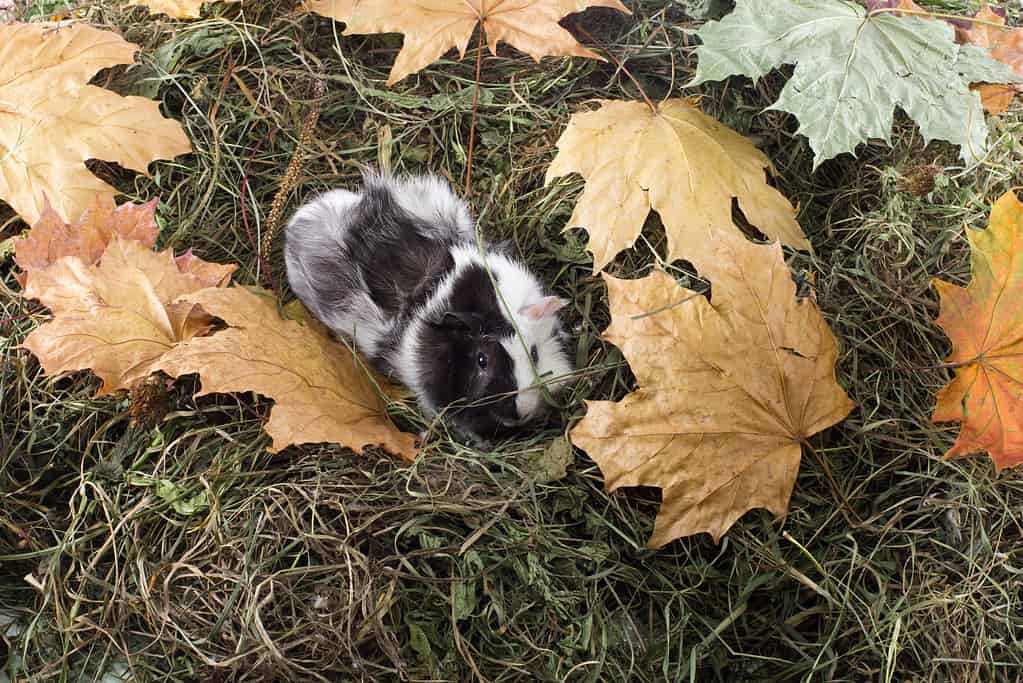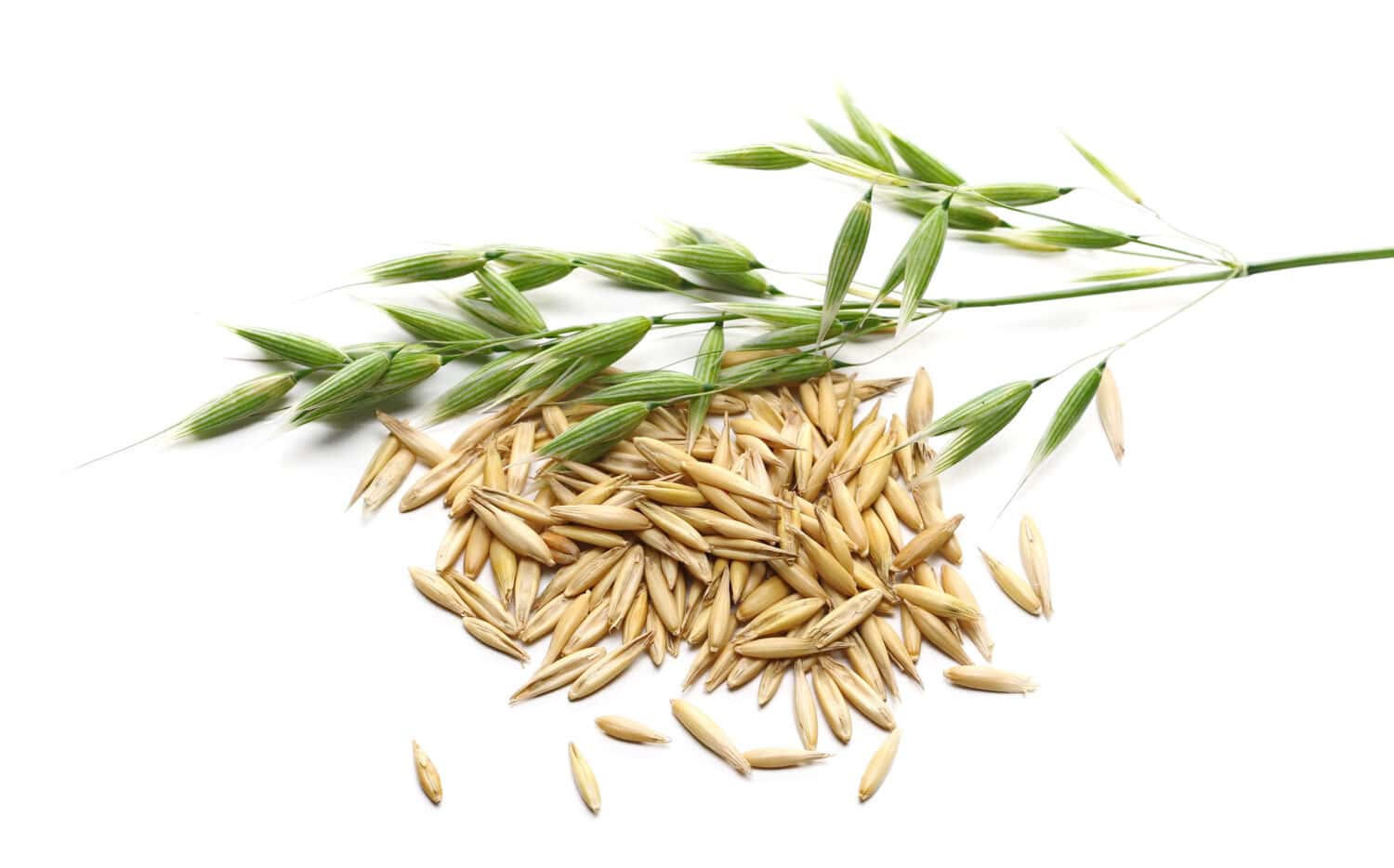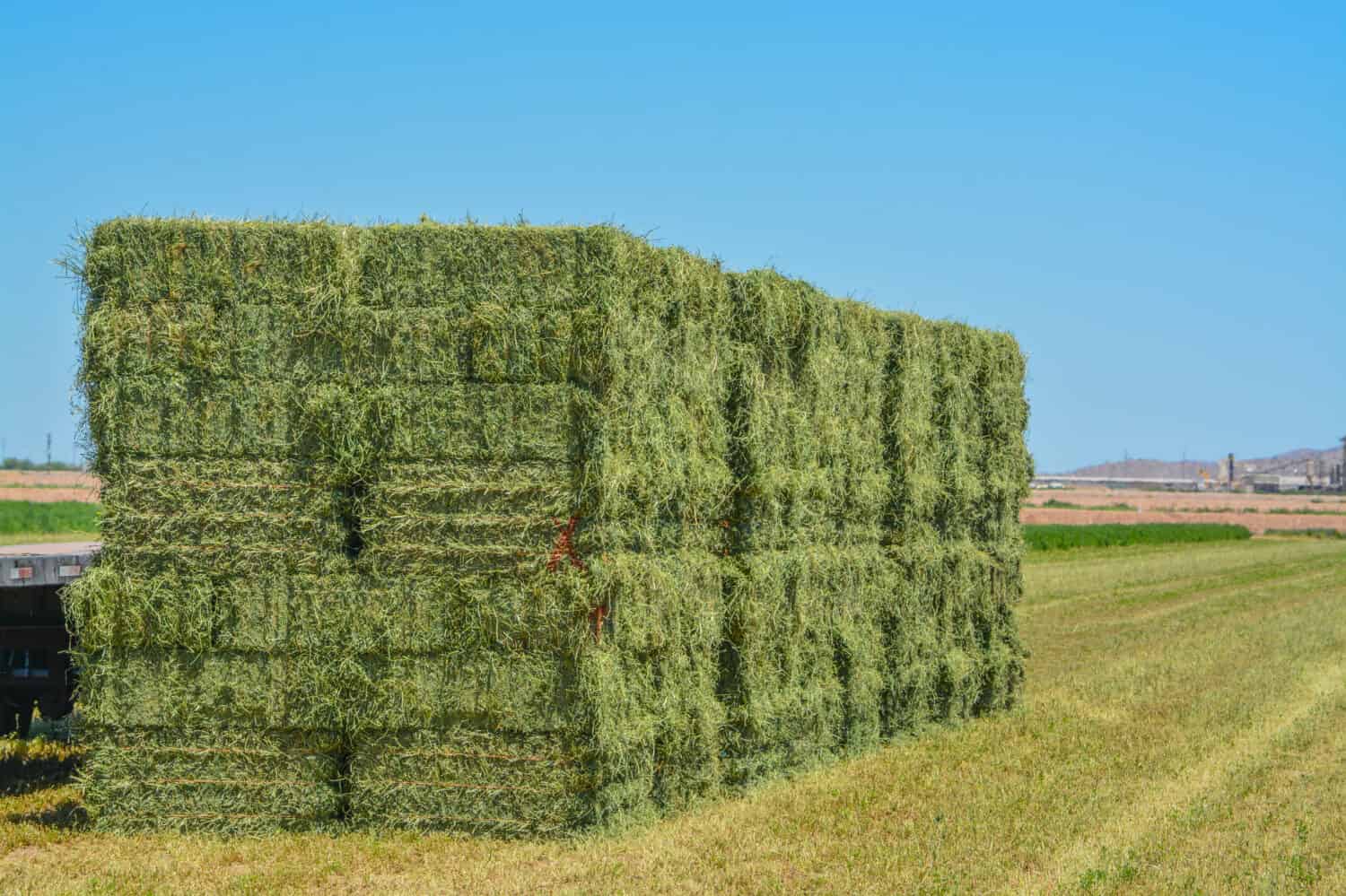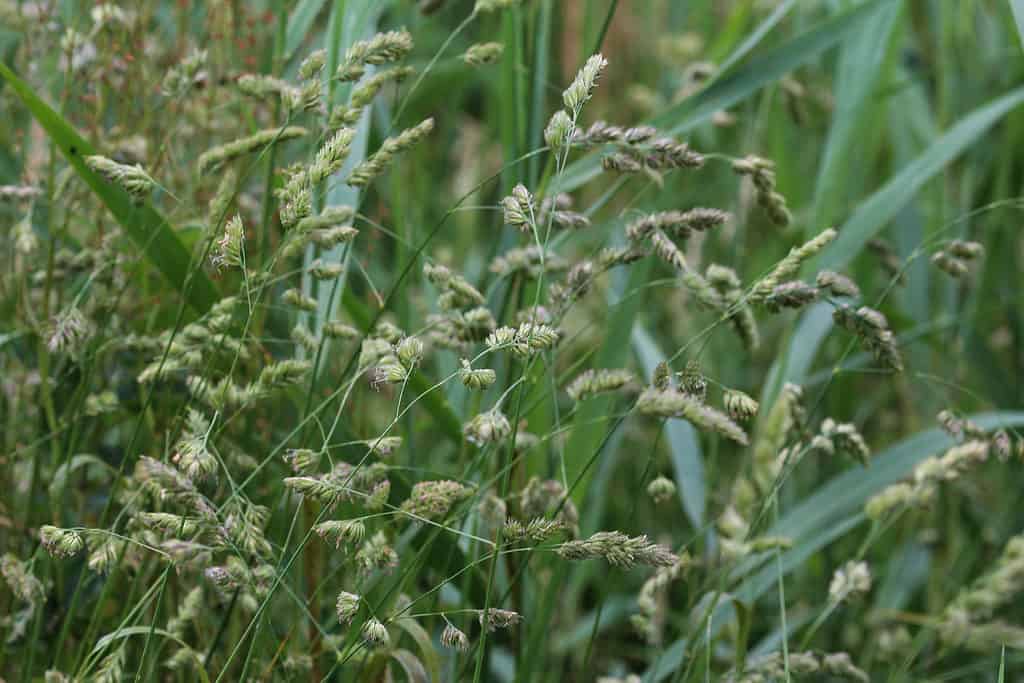Whether you’re baling your own hay for horses or you’re on the hunt for the best type of hay for your guinea pigs, it’s important to know the types. Not all hay is the same and some offer more nutrients than others.
For example, alfalfa hay is great for newborn guinea pigs, yet mature piggies should only have timothy hay. Let’s talk about the varieties, how you can identify one from another, and the benefits they present to animals.
Types of Hay
There are five main types of hay in the United States.
1. Timothy Hay

The majority of a guinea pig’s diet consists of Timothy hay.
©Guardalex/iStock via Getty Images
Timothy hay is ideal for tiny animals since it is high in fiber and low in calcium. It can reach heights of as much as six feet. It is perfect for your little hay-eating pets’ digestion and dental health. Nearly every environment is suitable for growing Timothy hay.
This type of hay is available in three variations. Sometimes picky, our small animal companions may require some trial and error before you can determine which cut they favor. You may experiment in this way by using sampler bags.
Any cut of Timothy hay is good for the health of animals, such as horses but it’s also crucial to balance their diet. Timothy hay offers a wonderful blend of nutrients, protein, fiber, and calcium and aids in digestion and dental health.
It’s important to know the differences between Timothy hay and Timothy grass. First, there is color. Typically, Timothy grass is more lush than Timothy hay. In fact, when you’re shopping around for Timothy hay, the greener it is, the fresher. Second, the protein content is a little bit higher in this type of hay.
Timothy hay might lose color as it dries, but it still has a high fiber and low protein content. If maintained properly, Timothy hay also lasts for many years when stored properly.
2. Oat Grass Hay

Oat grass hay may cause gas.
©xpixel/Shutterstock.com
In order to achieve the greatest digestion for our animal friends, oat grass hay is particularly produced as a forage crop. It’s similar to timothy or orchard grass in this way. Oat hay is picked at an early growth stage.
Oat grass fodder has very little starch since the seed head has not yet formed. When oat grass hay is properly handled utilizing the best fertilization strategies, it’s easier for farmers to produce an abundance. Also, the hay can aid in fiber digestion while reducing water-soluble carbohydrates.
Oat grass hay has less digestible calories and less crude protein than alfalfa cut at the same stage of growth. Sometimes alfalfa and other legumes are planted alongside oat grass hay to increase the protein quality. This helps to reduce the amount of non-structural carbohydrates in the finished product while increasing important amino acids like lysine.
3. Alfalfa Hay

This type of hay comes in bales, bags, and a pellet form.
©Norm Lane/Shutterstock.com
Alfalfa is a green, lush legume hay that is frequently included in livestock feed regimens to add more nutritional value. While it might not always be necessary, alfalfa hay has a significantly greater amount of protein than other grass hays, which might make it a valuable addition to the feeds of certain creatures.
This nutrient-dense hay is an excellent choice for horses in extremely productive phases of life who require some dietary assistance in their diet because of its high levels of protein, calcium, and vitamins. It is one of the most common types of hay.
Mares that are pregnant or nursing, mature workhorses, or young, developing foals will love a bit of alfalfa hay in their diet! States near the Rocky Mountains produce nearly all of the alfalfa hay, which is harvested in the spring and summer.
Pre-bloom harvesting is essential for maximizing the nutritional value of the hay.
4. Orchard Grass

Orchard grass can trigger allergies for many people.
©Mr. Meijer/Shutterstock.com
Over 200 years ago, orchard grass was brought to North America as a feed crop, and it is being utilized for hay and livestock nowadays. This type of hay survived agriculture and can thrive in a variety of environments.
This includes roadsides, banks, and dense forests. Although it is not particularly aggressive, it could migrate into higher-grade regions. The pale green to blue-green leaves of orchard grass are distinctive.
The fact that orchard grass improves the soil and nutritional levels in hay when coupled with legumes or alfalfa is essential knowledge for farmers. They often plant the three next to each other.
5. Triticale Hay

This type of hay is a favorite among dairy cows.
©Khawaja gulam fareed/Shutterstock.com
Triticale, a type of wheat and rye hybrid that is over 100 years old, is a form of hay that has gained increased attention in recent years. Triticale blends the nutritive content of wheat with the rye’s quick growth, resistance to heat, and resilience.
If this sort of hay is cut and baled before reaching full maturity, it may have pointed awns. These jagged awns can lodge in an animal’s mouth and cause ulcers. Pet owners should carefully examine Triticale hay bales for these pointy awns and avoid giving their animals hay with sharp awns.
Triticale can be utilized as a green forage plant in the pasture, cut and used to make silage, or baled and given in the form of dry hay because it has been shown to have more protein in it than each of its parent hays.
Summary of the Types of Hay
| Type of Hay | Animals That Eat This Hay |
|---|---|
| Timothy | Deer, rabbits, horses, guinea pigs, chinchillas |
| Oat | Rabbits, guinea pigs, chinchillas, cattle, sheep |
| Alfalfa | Horses, chickens, turkeys, sheep, pregnant and newborn guinea pigs |
| Orchard | Gerbils, guinea pigs, rabbits, mice, horses, chinchillas |
| Triticale | Horses and cows |
The photo featured at the top of this post is © Cary Meltzer/Shutterstock.com
Thank you for reading! Have some feedback for us? Contact the AZ Animals editorial team.







